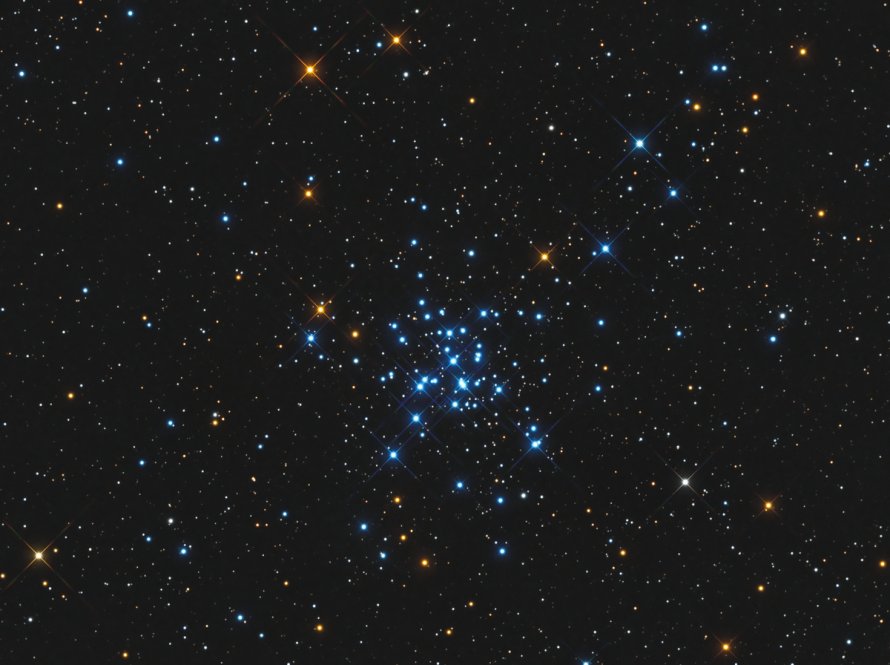M36 (NGC 1960) - Pinwheel Cluster
Messier 36 (NGC 1960), also known as the Pinwheel Cluster, is an open cluster located in the constellation Auriga, in the Perseus Arm of the Milky Way Galaxy in the Local Group of galaxies. M36 is 4300 light years away from Earth.
M36 is best viewed during winter, is magnitude 6.3, and can be viewed with binoculars. M36 is 10' in apparent size. For reference, the full moon is 30'.
Observing difficulty: Easy
- Name:
- Pinwheel Cluster
- Type:
- open cluster
- Constellation:
- Auriga
- NGC or IC:
- NGC 1960
- Magnitude:
- 6.3
- Viewing:
- binoculars
- Size:
- 10'
- Distance (light years):
- 4300 LY
- RA:
- 5h 36.1
- Dec:
- 34 08'
- Season:
- winter
- Milky Way location:
- Perseus Arm
- Galaxy group:
- Local Group
- Messier Marathon #:
- 19
* The naked eye can see up to magnitude ~7-8 objects under ideal dark sky conditions.
A Spectacular Open Cluster in Auriga
Messier 36, often abbreviated as M36, is an open cluster located in the constellation Auriga. Known for its resplendent array of stars, this cluster offers a mesmerizing sight to astronomers and skywatchers alike. This article takes you on a journey through the details and characteristics of M36, including its magnitude, location, and how to best observe this celestial treasure.
Discovery and Observation History
M36 was first noted by Italian astronomer Giovanni Batista Hodierna in the mid-17th century. However, it was French astronomer Charles Messier who later cataloged it in 1764. Since then, M36 has been a prominent object of study for both professional and amateur astronomers due to its brightness and relatively accessible position in the night sky.
Physical Characteristics and Magnitude
Situated approximately 4,100 light-years away, Messier 36 spans about 14 light-years in diameter and is composed of at least 60 stars. These stars are relatively young, with an estimated age of 25 million years, and they are predominantly blue and white giants. The cluster's combined light results in an apparent magnitude of 6.3, which, under ideal viewing conditions, is just on the cusp of visibility to the naked eye.
Astronomical Significance
Messier 36 holds particular significance for astronomers studying stellar evolution. The cluster's relative youthfulness allows us to examine a snapshot of a group of stars in their early stages of development. The presence of multiple blue and white giant stars gives scientists insights into the lifecycles of massive stars. The cluster's convenient placement and brightness further render it a valuable astronomical resource.
Finding and Viewing M36
Located in the constellation Auriga, Messier 36 can be found between the bright stars Betelgeuse in Orion and Capella in Auriga. By drawing an imaginary line between these two stars and looking about a third of the way from Betelgeuse to Capella, you will locate the region of the sky where M36 resides. The ideal time for viewing M36 is in the winter months, when Auriga is prominently visible in the night sky. Though the cluster's magnitude of 6.3 may allow it to be faintly visible to the naked eye in a dark sky, binoculars or a small telescope will significantly enhance the viewing experience, resolving the cluster's stars into a stunning, diamond-like spray of light.



